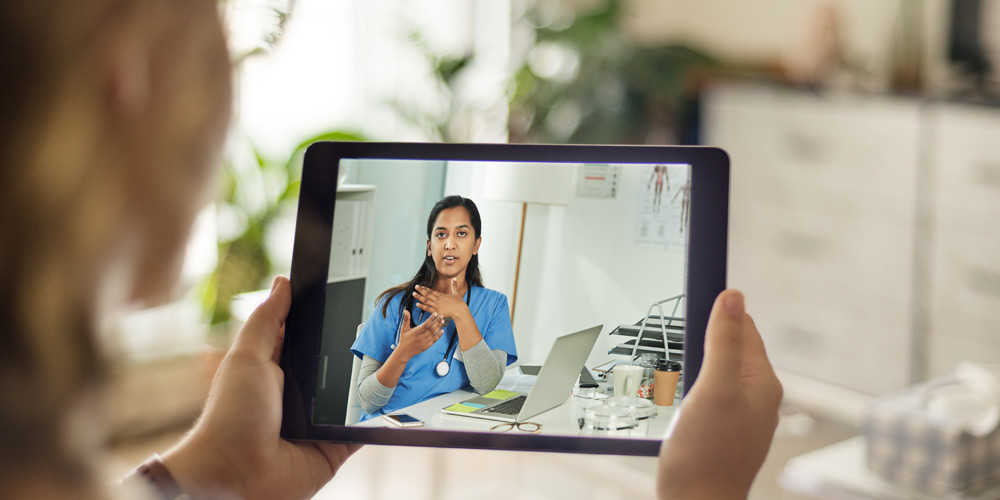“Telehealth for all” could be the answer to healthcare reform
As officials promote virtual doctor’s visits to curb the spread of coronavirus, this efficient form of care may lower costs.
The coronavirus is getting us comfortable with the virtual doctor’s appointment, and that’s going to ultimately change the entire conversation about the cost of healthcare.
The U.S. healthcare system is expensive and difficult to “fix” for a lot of well-documented reasons, from the oddity of health insurance as a third-party intermediary to a business model that profits most when people are sick. But the problems all collapse into one core fact: There’s vastly more demand for healthcare than supply. So, naturally, prices surge.
Technology is poised to flip healthcare from scarcity to abundance. Think of this in the context of Google Maps. A couple of decades ago, a map wasn’t exactly scarce, but you had to trudge to a store and pay money for a physical product that was printed in limited quantities. Today, every owner of a smartphone can tap a screen and get a map instantly for free, and that map does vastly more than the old physical maps — it can even route you around traffic jams. Technology moved maps from being relatively expensive and hard to get to being free and available seemingly out of thin air.
That’s the power of shifting something that was physical and bound by geography to a digital and cloud-based format. This dynamic has transformed industry after industry: media, retail, music, banking, and education.
It’s healthcare’s turn, and the coronavirus crisis looks like it could be a turning point.
Today’s healthcare industry is built on scarcity. There are not enough physicians, hospital beds, medical devices, or drugs to go around, so these things are expensive and a pain to get (you know, five hours waiting in an emergency room). As the population grows and ages, and as we find new ways to treat more conditions, demand keeps soaring. Also driving cost is the fact that the options our system tends to utilize are high-priced to begin with. Supply can’t keep up because it’s too hard and costly to produce vastly more doctors, hospitals, devices, and drugs.
Enter telehealth. Today a telehealth visit still needs a doctor, and a doctor from the patient’s own state, on the other end, but it has the potential to release doctors from geography. Regulations have to change so doctors from one state can see patients in any other, and the coronavirus crisis is accelerating that. (In March, the Trump administration waived some rules about cross-state telehealth.) So, if there’s too much demand in New York, for instance, the system could tap doctors with open time in other parts of the country. Doctors could see patients at all hours, without keeping an office open. And patients wouldn’t need to waste time in waiting rooms, sitting elbow-to-elbow with other sick people.
As coronavirus cases mushroom, officials are increasingly pushing people to see a doctor first via online video. This helps keep people from moving around and spreading the virus, and it also helps the system manage the jump in demand. Patients will begin to get used to the idea that care doesn’t have to start with a face-to-face appointment. “There’s this slow momentum that’s been building,” Dr. Gary Greensweig, chief physician executive of CommonSpirit Health, recently told MarketWatch. “And now, with something like coronavirus, which is very amenable to telemedicine, we’re going to see it tip.”
As coronavirus cases mushroom, officials are increasingly pushing people to see a doctor first via online video.
But that’s only the beginning. Technology companies are building artificial intelligence (AI) systems that can be an initial stop before encountering a human doctor. The companies refer to it as “pre-primary care.” The key to making pre-primary care work will be data, and many aspects of health data are falling into place. We can get cheap DNA tests as a baseline. Lots of people wear devices that track things such as heart rate, breathing, and even anxiety. Our medical records are increasingly digitized, and the government is forcing companies to make that data available to you and your health providers and make it interoperable so you can use it however you want. Privacy for medical data — always a concern — is being addressed by policymakers.
If a virtual care system has enough data about you, AI can learn about your health and your patterns. It can learn about you in other ways, too. A company called Mindstrong, for instance, has figured out that it can detect mental states such as depression just by watching how you use your phone. Livongo, a cloud-based service that helps people manage their diabetes, sends users occasional questions about how they’re feeling as a way to better learn about them. And in theory, the GPS on your phone could let a virtual care service know where you’ve been — including whether you've visited a high-risk travel area.
So, if you tell AI what you’re feeling, and AI cross-references that with the data about you and checks it against all the available medical research (something no solo doctor could do), it could arguably make a preliminary diagnosis about as well as a doctor who knows nothing about you. At the very least, it could either tell you, “Take two aspirin and call me in the morning,” or, “You need to come in and see a doctor.”
Imagine if we all had an AI pre-primary care app in our pockets during today’s crisis. Even the most hypochondriacal among us could check on our conditions constantly, at little cost and with no impact on the healthcare system. More people would catch earlier signs of the coronavirus so they could get help and quarantine themselves.
In general, that is indeed how virtual pre-primary care works: More people would catch more health problems earlier, which almost always lowers the cost of care and helps keep people out of doctors’ offices and hospitals. So, as more care becomes digital, it should ease the demand for hands-on healthcare.
And that should be better for everyone. Costs should drop. People will stay healthier and have access to care anytime, anywhere. Doctors will spend less time on less-consequential medical problems and have more time to help patients who really need it.
Virtual care for all could become as inexpensive for society as online maps for all.
That’s not science fiction. Early versions are getting built and people are using them. But the general public will have to be convinced that virtual care works (until recently, just 1 percent [pdf] of U.S. medical claims went through telehealth). The coronavirus crisis and the push for telehealth is a beginning.




